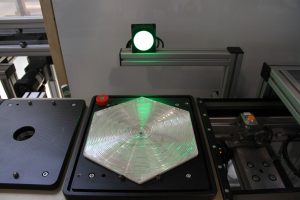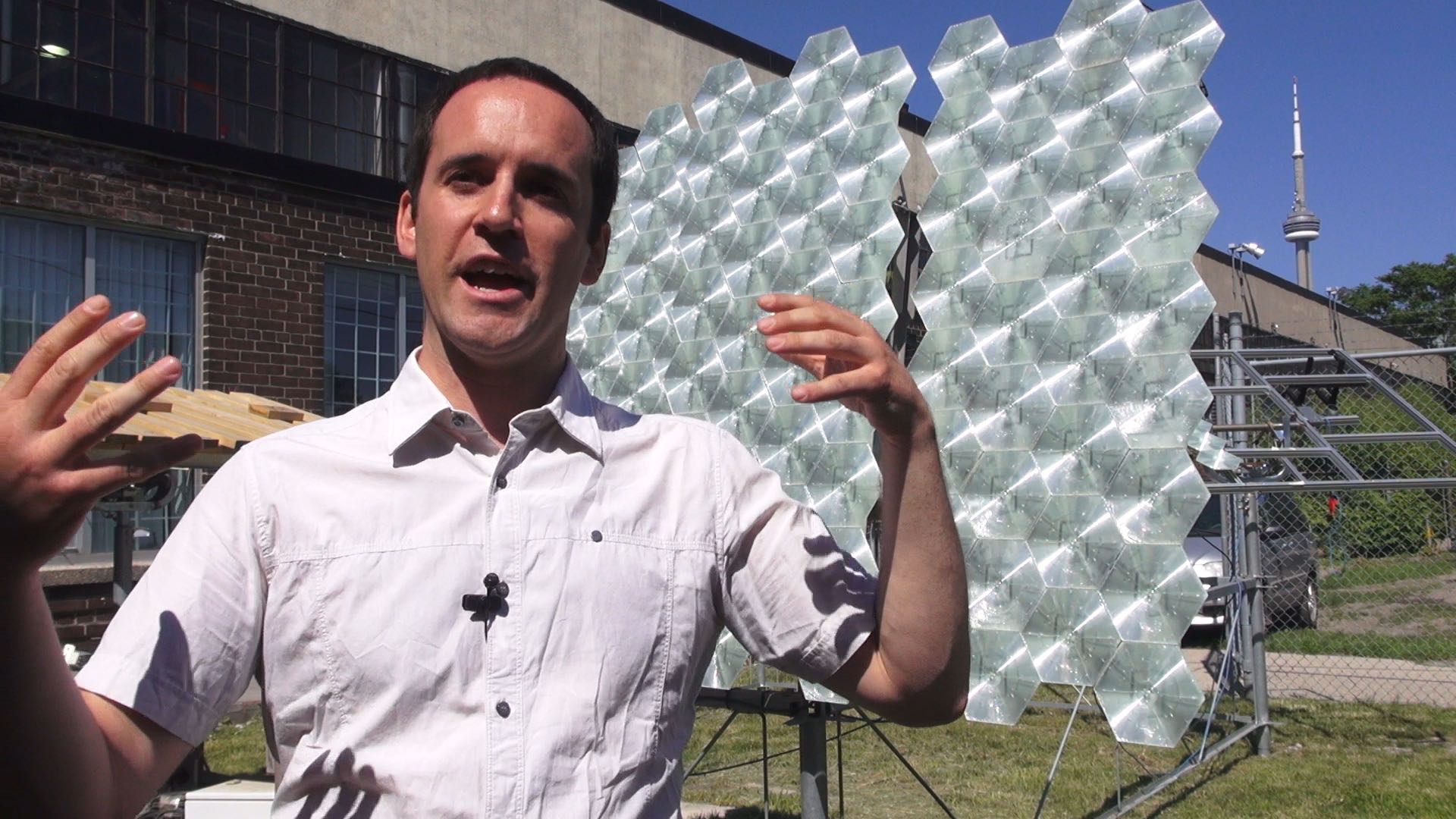By David Dodge and Duncan Kinney
John Paul Morgan got the inspiration for starting a solar company while he was working for Doctor’s Without Borders in the Congo. It blew him away that all it took was a couple of solar modules and a pump to replace the toil of 20 women trudging up and down the hill all day carrying water to the hospital.
Before he left he set up the solar powered system to bring clean, running water to the hospital. Since then the physicist slash engineer has dedicated himself to building a better, cheaper solar panel.
“If there’s a way to make electricity affordable enough that those people in that village could afford it and use it and be empowered by it, and have lights to read by and mills to mill their flour with and pumps to move their water, the world would be a better place,” says Morgan.
John Paul Morgan started Morgan Solar with his brother Nick Morgan in 2007. Since then the solar module business has changed drastically as the price of solar PV has dropped from $4.50 a watt $0.70 a watt.

Nick Morgan in the Morgan Solar plant in Toronto.
Regardless, Nick Morgan and the team at Morgan Solar are unperturbed.
“You convince yourself that you’ve come up with something really, really special and you spend all day, everyday on it. And then every now and then you stop and think “What if we’re just drinking the Kool-Aid?” “What if this is just crazy?” Then you sit down with totally independent technical people who’ve been hired to just give an independent technical assessment, and they get really excited about it too, that’s when you start to think “Okay, maybe we really are on to something.”
Nick Morgan is the vice-president of business development for Morgan Solar. And it’s that entrepreneurial mindset, the rock-solid belief in the idea and your team – that’s when change happens.
The secret sauce – Morgan’s concentrated solar module

Morgan Solar’s Sun Simba™ concentrated solar modules. If it all goes as planned the new panels will be cheaper to make and twice as efficient as conventional solar PV modules. Photo David Dodge, Green Energy Futures
Morgan Solar is developing a concentrated solar photovoltaic module that should be ready for market by the summer of 2014. Instead of a solid panel of silicon like a typical solar module, concentrated solar uses a device to focus the light onto a tiny, ultra-efficient photovoltaic cell.
There are other concentrated solar PV companies and products out there, but the secret sauce for Morgan is in their optics. To gather and focus the light they use a lens made of cheap, everyday plastic called poly methyl methacrylate or PMMA.
“It’s used to make automotive headlamps, it’s used to make paints and it’s extremely cheap. So we’re replacing expensive semiconductor materials with really inexpensive polymer materials and that’s kind of key to reducing the cost of the raw materials that go into the solar panel,” says John Paul Morgan.
The solar cell that the light is focused on is the same stuff that’s shot into space and used to power satellites.
“One wafer would cost 400 times, 500 times more than a silicone solar cell, but it’s much, much, more efficient. And when you dice that up and when you use a tiny sliver in the middle of a concentrator, you can get superior economics,” says John Paul Morgan.
Morgan is an engineer, a physicist and is an expert in fibre optics. It’s this experience that inspired him to make a lens that redirects the incoming light 90 degrees sideways to the middle of the lens where the tiny solar cell is waiting. This means the lens used to focus the light is cheap and much thinner than its competitors.

Sun Simba™ solar cells being assembled in the Morgan Solar plant in Toronto, Ontario. Photo David Dodge, Green Energy Futures
It’s this combination of innovation and common sense that has Morgan convinced they will produce a solar module that is twice as efficient and and twice as cheap as conventional solar PV.
They’ve also got believers. They’ve raised $40 million over the last six years from sources as diverse as friends and family, angels, government grants, VC funds and even Enbridge. They even raised $8.2 million in the teeth of the recession of 2009.
Tom Rand is a director with Morgan Solar and he also led an investment round in the company in 2010. In an interview with Tyler Hamilton he said he no problem finding investors.
“It wasn’t a problem finding interest, I just reached into my network and within days it was filled up.”
And three years after that interview Rand is still as bullish as ever.
“Morgan Solar has reinvented solar power with an optic that takes all the incident sunlight and drops it onto a very small, very efficient chip. End of the day, they will be in the market in 2014 with the cheapest solar power on the planet. That’s a game changer.”
Not that raising money is necessarily an indicator of success, at the end of the day they need a product that sells, but without that kind of support it’s doubtful they would have gotten to even the pre-commercial stage they’re at right now.
There are also some potential downsides. These systems are not appropriate for rooftop systems – large-scale solar systems only. Also concentrated solar needs a tracker to work properly and while they’ve developed their own tracker introducing a mechanical system like a tracker does introduce more complexity to the system.
The future of solar?
Bringing down the cost of solar energy down to $0.35 per watt would be quite an achievement. The plan is to have their product ready for sale to customers by the summer of 2014.
For now Morgan Solar has a solar tracking system available. Mount any kind of solar PV module in it and it will follow the sun and increase the module’s efficiency. It was developed because concentrated solar PV modules need to directly face the sun and because Morgan Solar wasn’t happy with the existing solar trackers on the market.
As for their concentrating solar modules Morgan Solar is signing its first purchase orders now for projects in Ontario, the US and India.
And regardless of the success or failure of one company in the renewable energy space the downward pressure on renewable energy prices through innovations like these is good news for the industry as a whole. And if everything breaks right it might even mean less back breaking work hauling water and milling flour for Morgan’s old friends back in the Congo.

